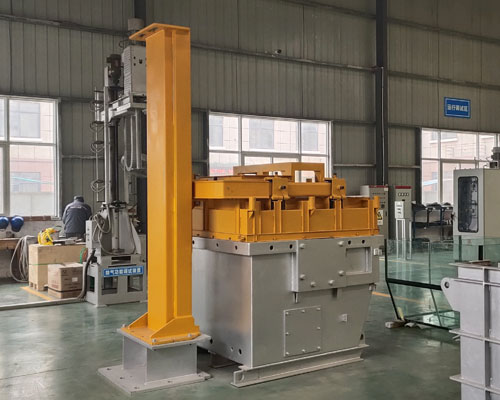Molten Aluminium Degassing Equipment mainly treats hydrogen in molten aluminum and other residues (alkali metals, slag inclusions), which are removed after being treated by the degassing equipment.
The principle of online degassing equipment is the principle of air flotation. The process gas (inert gas or a mixture of inert gas and chlorine gas) is injected into the melt through the rotor, which is broken into uniformly dispersed micro-bubbles by the rotor, and the micro-bubbles rise into the melt.
Hydrogen and inclusions are adsorbed into the bubbles and then rise to the melt surface to be removed.
The degassing efficiency of the degassing box is stable at 60% on average. When the argon aluminum liquid is less than or equal to 1%, the best degassing effect can reach 0.09 cc/100 g.

Features of Molten Aluminium Degassing Equipment
1. The online air-blown refining equipment adopts a sealed design, which prevents the entry of outside air and causes secondary pollution.
2. Double-body structure design, the degassing part and the electric heating part can rotate (the rotation range is designed according to the site conditions), and have self-locking function, which eliminates the hidden danger of misoperation and facilitates maintenance.
3. The key parts of the rotor drive mechanism are made of heat-resistant and corrosion-resistant stainless steel materials, which are processed and formed by numerical control to ensure the verticality of the rotor, the formation of a micro-bubble bed, and the stable degassing rate.
4. The degassing rotor, heater protection sleeve, and thermocouple protection sleeve are all made of silicon nitride ceramics, which are compared with graphite, SiC-silicon nitride composites and other materials that are mostly used in the aluminum industry. , It has strong advantages in aluminum corrosion resistance, thermal shock resistance, oxidation resistance, wear resistance, mechanical strength, and so on.
5. Use non-stick aluminum lining and high-quality thermal insulation materials to keep the shell temperature below 65 degrees.
6. The gas flow rate and rotor speed are adjustable, and the size of the bubbles can be controlled, so that the gas introduced can exert the greatest effect of degassing, slag removal and refining.

